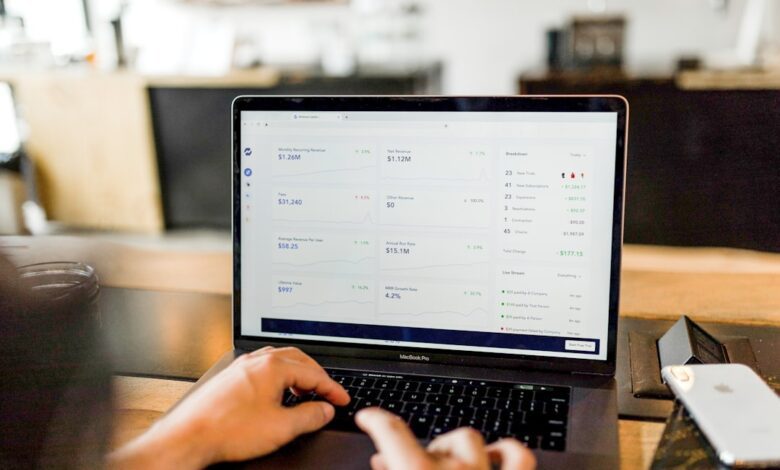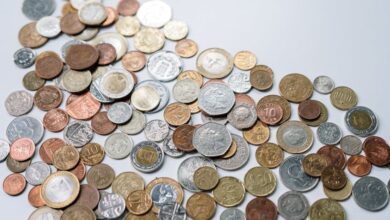Metals in Motion: Analyzing the Intersection of Industry, Investment, and Sustainability

In today's rapidly evolving economic landscape, the role of metals extends far beyond mere commodities; they are pivotal to both industrial advancement and investment strategies. As industries pivot towards sustainability and technological innovation, the demand for metals such as silver, copper, and rare earth elements is surging. This article delves into the multifaceted roles of these metals, exploring how silver influences both industrial applications and investment trends, while copper prices serve as critical indicators of global economic health. Furthermore, we will examine the burgeoning demand for rare earth metals driven by green energy technologies, compare investment potentials between platinum and palladium, and assess the impact of inflation on precious and industrial metal prices. Additionally, we will discuss how mining regulations shape market dynamics and consider the future of aluminum in a sustainable economy. Through this exploration, we aim to illuminate the complex interplay between metal markets and broader economic forces, providing valuable insights for investors and industry stakeholders alike.
- 1. **Silver's Dual Influence: Industrial Applications and Investment Trends**
- 2. **Copper Prices as Economic Barometers: Understanding Global Health Indicators**
- 3. **Navigating the Future: The Demand for Rare Earth Metals in Green Energy Technologies**
1. **Silver's Dual Influence: Industrial Applications and Investment Trends**
Silver plays a pivotal role in both industrial applications and investment markets, making it a unique asset in the commodities landscape. On the industrial side, silver is highly sought after for its exceptional conductivity, making it essential in electronics, solar panels, and batteries. The growth of renewable energy technologies, particularly solar energy, has significantly increased the demand for silver. As the world shifts towards more sustainable energy solutions, this demand is expected to rise, reinforcing silver's position as a critical component in various industrial processes.
Simultaneously, silver serves as a popular investment vehicle, often viewed as a hedge against inflation and economic uncertainty. Investors flock to silver during times of financial instability, seeking its intrinsic value and liquidity. The metal's historical significance as a store of value further enhances its appeal among both individual and institutional investors. Additionally, silver's price movements often correlate with gold, as both metals are perceived as safe havens. However, silver's lower price point compared to gold makes it accessible to a broader range of investors.
This dual influence creates a dynamic interplay between silver's industrial demand and its investment appeal. Changes in market conditions, technological advancements, or shifts in economic sentiment can significantly impact silver prices. As industries continue to evolve, and as investment strategies adapt to changing economic landscapes, silver remains a vital asset, balancing its roles in production and investment portfolios.
2. **Copper Prices as Economic Barometers: Understanding Global Health Indicators**
Copper prices serve as a crucial indicator of global economic health due to their widespread use in various industries, particularly construction, manufacturing, and electrical applications. As a fundamental component in electrical wiring, plumbing, and building materials, copper's demand tends to rise in tandem with economic expansion. Consequently, fluctuations in copper prices can reflect broader economic trends.
During periods of economic growth, increased industrial activity typically drives up demand for copper, leading to higher prices. Conversely, in times of recession or economic slowdown, demand diminishes, often resulting in falling prices. This correlation positions copper as a reliable barometer for assessing economic conditions. For instance, significant price increases may suggest robust infrastructure development and manufacturing output, while declining prices might indicate reduced industrial activity and potential economic challenges.
Moreover, copper prices are influenced by global factors such as geopolitical tensions, trade policies, and currency fluctuations. For example, a trade dispute between major economies can disrupt supply chains and affect copper availability, leading to price volatility. Similarly, a strong U.S. dollar can make copper more expensive for foreign buyers, subsequently impacting demand and pricing dynamics.
Additionally, the growing focus on green technologies and renewable energy solutions is expected to further influence copper demand. As electric vehicles, solar panels, and wind turbines gain traction, the need for copper is anticipated to rise, potentially leading to increased prices and reflecting positive economic momentum in the green energy sector.
In summary, monitoring copper prices provides valuable insights into global economic health and trends. Investors and analysts alike closely observe these price movements to gauge industrial activity, assess market sentiment, and make informed decisions in both commodity and equity markets.
3. **Navigating the Future: The Demand for Rare Earth Metals in Green Energy Technologies**
As the global transition towards sustainable energy sources accelerates, the demand for rare earth metals is poised to surge significantly. These metals, which include elements such as neodymium, dysprosium, and terbium, play a crucial role in the manufacturing of advanced technologies essential for green energy solutions. From powerful permanent magnets used in wind turbines and electric vehicle (EV) motors to catalysts in hydrogen fuel cells, rare earth metals are integral to enhancing the efficiency and performance of renewable energy systems.
The rapid expansion of electric vehicles is a primary driver of rare earth metal demand. As automakers pivot towards electrification, the need for lightweight, high-performance batteries and electric drivetrains has intensified, resulting in a substantial uptick in the requirement for rare earth elements. Additionally, the growth of energy storage systems, which are vital for balancing supply and demand in renewable energy generation, further underscores the importance of these metals.
Moreover, the push for greener technologies extends beyond transportation. The deployment of solar panels, wind turbines, and energy-efficient appliances all necessitates the use of rare earth metals, thus reinforcing their critical role in achieving a sustainable energy future. However, the supply chain for these metals is often fraught with challenges, including geopolitical risks and environmental concerns associated with mining practices.
As the demand for rare earth metals continues to rise, stakeholders in the energy sector must navigate these complexities to ensure a stable supply while balancing economic, environmental, and social considerations. This evolving landscape presents both opportunities and challenges, making it imperative for investors and industries alike to keep a close watch on trends in rare earth metal markets as they relate to the broader green energy agenda.
In conclusion, the multifaceted role of metals in both industrial applications and investment strategies underscores their significance in today's economy. Silver's dual influence, highlighted by its applications in technology and its status as a safe-haven asset, illustrates the intricate balance between utility and investment potential. Similarly, copper serves as a critical barometer for global economic health, reflecting broader market trends and investor sentiment.
As green energy technologies continue to drive demand for rare earth metals, the landscape of investment opportunities evolves, presenting both challenges and prospects for investors. The ongoing debate between platinum and palladium further exemplifies the complexities of the precious metals market, as each metal offers unique advantages depending on market conditions and investor goals.
Moreover, the role of metals in diversifying investment portfolios cannot be overstated, especially in an era marked by inflationary pressures that influence the prices of both precious and industrial metals. With aluminum emerging as a key player in sustainable development, its future looks promising as industries pivot towards eco-friendly practices.
Finally, the impact of mining regulations on metal prices highlights the intricate interplay between environmental considerations and economic viability. As the market adapts to these regulations, investors must remain vigilant and informed. Ultimately, understanding these dynamics will empower investors to navigate the evolving landscape of metal markets, making informed decisions that align with their financial goals and values.





